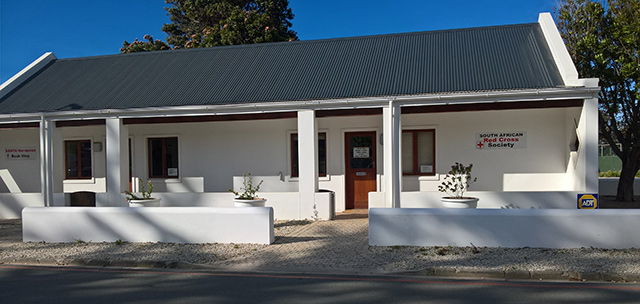About Us | History
The Creation of the Red Cross and the Geneva Convention
The date is June 1859. The place is Solferno in Northern Italy, scene of a bloody battle between the Austrians, French and Piedmontese. A visiting businessman, Henri Dunant of Geneva, is deeply distressed by the sight of the wounded and dying, abandoned on the battlefield in their thousands. Moved by their plight, he organises the local people to give help to their casualties "with no thought given to which army's soldiers they are".
Three years later, with visions of this scene of suffering still fresh in his mind, Henri Dunant writes a moving book, soon to become famous "A Memory of Solferno". This ends with two proposals: that voluntary relief Societies be created in every country during times of peace, with trained personnel to be available in times of war to aid all wounded; and also that a convention between states should provide a legal basis for the protection of military hospitals and medical personnel. The first proposal was to lead to the creation of the Red Cross; the second to the Geneva Convention.
In 1863, four Genevese citizens, taking up Dunant's ideas, joined him in establishing a committee which convened an international conference in Geneva. This conference, which was attended by 26 delegates from 17 different countries, adopted resolutions that laid the foundation of the Red Cross Movement. A year later, an international treaty was signed, the so-called First Geneva Convention, entitled "Convention for the Amelioration of the Condition of the Wounded in Armies in the Field".
This solemn international covenant was increased in scope and effectiveness in 1906, 1929 and 1964, by the addition of three more conventions, which together provide protection for Armies in the Field, Maritime Warfare, the Humane treatment of Prisoners of War and Protection for Civilians in countries at war. Known as the Geneva Conventions, this body of international law is the corner stone of the Red Cross as a universal movement, which now exceeds 185 National Societies and more than 250 million supporters.
The History of the Red Cross in South Africa
The South African Red Cross Society (SARCS) is a voluntary aid society and a corporate body with legal personality.
The first Red Cross body in the country came into being on New Year's Day 1896 when a group of medical practitioners in Pretoria obtained permission from the Executive Council of the South African Republic to form an independent Ambulance Corps. After the Peace of Vereeniging in 1902 the movement stayed dormant until May 1913 when a group of men & women, including several doctors, met in Johannesburg, and formed an organisation called The South African Red Cross Society.
The objectives of the Society were to promote instruction and award certificates for proficiency in First-Aid, Home-Nursing, Hygiene & Sanitation; to organise voluntary service among certificated men & women for rendering efficient help when and where necessary; and to carry out relief work for the injured, sick and wounded, in peace and war.
During the First and Second World Wars, The South African Red Cross manned ambulances and field dressing stations through the heat of battle. It provided hospital ships and sent food parcels and comfort to prisoners of war and refugees. And because it knew no frontiers, it was able to reassure anxious relatives about the safety of their families.
In 1917 and 1918 two Red Cross Hospitals were opened in Johannesburg for the treatment of returned soldiers. A Voluntary Aid Corps was formed in June 1918, and it recruited and trained personnel in readiness for emergency and war, and carried out many public duties. Junior Red Cross "links" were formed in the schools and health promotion work was carried out by means of posters, leaflets, lectures, films, etc.
The South African Government, in performing its obligations under the Geneva Conventions of August 12 1949 (acceded to by the Republic of South Africa on 31 March 1953) and their Additional Protocols of June 8 1977 (acceded to by the Republic of South Africa on 21 November 1995), relied on The South African Red Cross Society to provide trained personnel for first-aid and nursing to augment its Medical Services. This necessitated a uniformed Corps of trained volunteers subject to a rank and disciplinary structure.
Today, the South African Red Cross is a National Society, organized into five regions under the control of an elected National Council. As a vitally important partner in this country's health and welfare network, its principle concerns can be summarized in one sentence: to encourage and promote the improvement of health, the prevention of disease and the mitigation of suffering.
The South African Red Cross Society (SARCS) has been involved in various humanitarian activities for over one hundred years since its inception, and it has always been necessary for it to raise funds to support these activities.
The History of the Red Cross in Hermanus
Hermanus Red Cross has been in existence since 1957 within the aegis on Western Cape regional headquarters of the Provincial Red Cross headquarters in Wynberg, Cape Town.
The Hermanus Red Cross has always been managed by a local committee and has until recently rented small premises ( an old cottage renovated as a depot) from the municipality. There have been prefabricated extensions added. There is a reception, 2 training rooms, equipment and dry food storage rooms. The depot was on a 99 year old municipality lease, however a new premises will be built. Currently the land on which the depot stands is owned by the United Church.
We also own a satellite building in Zwelihle a suburb of Hermanus where many Xhosa residents live. This is rented by another non profit organisation. Now sold to Hermanus Rainbow Trust (2020)
Hermanus Red Cross relocated to 2 A Aberdeen Street in 2016 and is divided in 2 facilities shared withe SANTA
Copyright © Hermanus Red Cross (2025) All Rights Reserved

